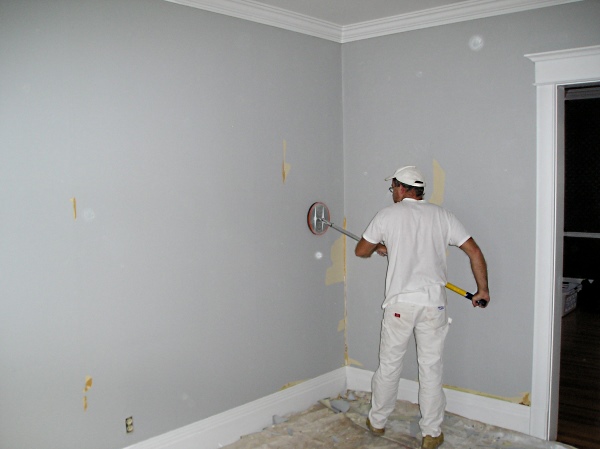If you’ve gone through the hassle of removing old wallpaper before painting, congratulations! The worst part is over. What do you do now? Thankfully painting after removing wallpaper involves just a few simple steps.
Remove any remaining glue
Wallpaper usually leaves some glue behind when it’s removed. Use TSP (trisodium phosphate) or a solution of vinegar and water to wash the walls. Scrub gently, and try not to get the wall too wet. TSP can be tough on your hands, so wear gloves when using this product.
Don’t worry about getting every last bit of glue off, but do try to remove all the backing paper if possible, because it will show through the paint. Rinse the walls with warm water and allow to dry completely.
Smooth the surface
If remaining wallpaper adhesive has made the wall feel rough, sand it lightly to knock down the texture and make it smooth again. If you weren’t able to get all the backing paper off when washing the walls, the sandpaper should do the trick now. Works on smooth walls only. Textured walls can be lightly sanded but be careful not to sand off any texture.
Prime
If all the glue has been removed and the surface is smooth, apply a coat of good latex primer. Two good brands are Gripper and Zissner 123. If glue remains, use Universal Oil Base (like Kilz) or a shellac primer, latex will soften and raise the remaining adhesive. Be especially careful to seal any remaining backing paper, or it might lift later, pulling the paint up with it. This is another good reason to remove all remaining backing paper before priming.
Patch any damaged areas
It’s not uncommon for wallpaper removal to cause some damage to the wall beneath. Use joint compound and a wide putty knife or drywall knife to fill in any dings or gouges.
Do a skim coat over any remaining backing paper. This should keep the edges of the paper from showing through the final finish. Allow to dry, then sand smooth, feathering the edges.
Prime repaired areas
Seal repairs with latex primer and allow to dry. This will help hide the repairs after painting.
Paint
Paint, using your choice of roller. Patched areas sometimes appear as a dull spot; this is easily fixed with another coat of paint. Use high quality paint and good painting techniques and everything will be fine.


